1970s
Follies of the Madmen #286
Lots of goofy stuff here.
First commercial: who's the publisher for that special Mom propaganda book?
Second and third commercials: love that trippy 2001: A Space Odyssey sequence as we fly thru the aspirin particles.
Fourth commercial: once upon a time, hairy chests were okay.
Fifth commercial: this woman has ingested so much iron that her bare feet are comfortable on metal stirrups.
Sixth and seventh commercials: life in a circus-acrobat household.
Eighth commercial: multivitamins promote blue balls.
Ninth commercial: children are iron-vampires.
Tenth and eleventh commercials: psychedelic scrumpcheroo!
Twelfth commercial: hey, a rerun! Or is this a flashback from dropping too many Chocks?
Thirteenth and fourteenth commercials: Charley Chocks, pusherman.
Fifteenth commercial: Chocks and chopsticks!
Sixteenth commercial: And you thought the Archies were too fake!
Seventeenth commercial: interplanetary Chocks colonialism!
Posted By: Paul - Sat Jun 18, 2016 -
Comments (2)
Category: Business, Advertising, Products, Drugs, Psychedelic, Children, Elderly, 1960s, 1970s
Peanut Butter believed to be aphrodisiac
In 1971, it was widely reported that a girls' high school in Johannesburg, South Africa had banned peanut butter due to a concern that peanuts were a sexual stimulant.This news, of course, was met with incredulity by the American press, but given the lack of details in the story (the school, for instance, was never named) I suspected it might be an urban legend reported as news. However, in a New Scientist article published two years later (Nov 1, 1973) I was able to find some more information which suggests that the story apparently was true, and that the ban was inspired by local African folk belief about peanuts:

Sydney Morning Herald - July 19, 1971
Posted By: Alex - Fri Jun 17, 2016 -
Comments (2)
Category: Food, Sexuality, 1970s
Between Lust and Watching TV
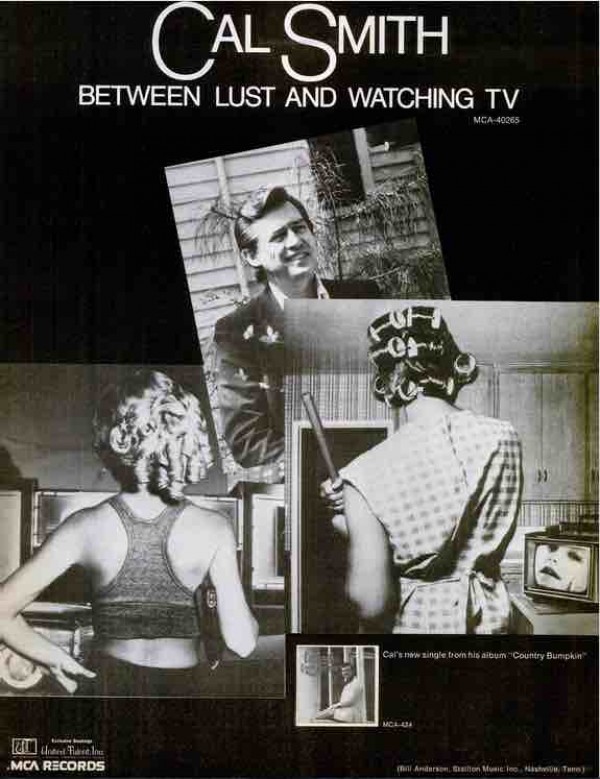
Posted By: Paul - Fri Jun 17, 2016 -
Comments (5)
Category: Music, Sexuality, Television, Husbands, Wives, 1970s
Victor the Wrestling Bear
Full story here.
Posted By: Paul - Mon Jun 13, 2016 -
Comments (4)
Category: Animals, Daredevils, Stuntpeople and Thrillseekers, Wrestling, 1970s
Warning required before crime
January 1973: Texas State Rep. Jim Kaster filed a bill that would have required criminals to give their victims twenty-four hours notice before they committed a crime. Argued Kaster, "Obviously the criminal is not going to do it, but this would be another punishment that could be added to the penalty." No surprise, the bill was defeated.

Arizona Republic - Jan 19, 1973
And this article gives a little more info:

El Paso Herald-Post - Jan 19, 1973
Posted By: Alex - Sat Jun 11, 2016 -
Comments (10)
Category: Crime, Law, 1970s
Eviction arrived before second coming
Grannis, Arkansas: On September 29, 1975, the Nance family — about 40 of them in all — stopped paying all their bills (including their mortgage) because they were sure the Second Coming was about to happen. They knew this because Aunt Iola Walker had received a message from God. Ten months later, U.S. marshals evicted them, and the family members had to, once again, get jobs.

The Eagle (Bryan, Texas) - July 17, 1976
Posted By: Alex - Thu Jun 09, 2016 -
Comments (5)
Category: Religion, 1970s
Circular Drive-in
In 1973, Lloyd Honey opened the Tricircle drive-in movie theater. It was the first-ever circular drive-in. The advantage of this was that it allowed x-rated movies to be shown, because the picture couldn't be seen from surrounding areas. This circular design was marketed as "Visible X" technology, but it doesn't seem to have caught on.More info from Drive-In Theaters by Kerry Segrave:
According to drive-ins.com, the Tricircle was torn down at some point, and there's now a Wal-Mart on the site.


Boxoffice magazine - Oct 20, 1975
Posted By: Alex - Fri May 27, 2016 -
Comments (9)
Category: Movies, 1970s
Stealing Boosts Staff Morale
Companies do all kinds of things to boost staff morale. They hire motivational speakers, have team-building exercises, give employees gifts, etc.But the industrial psychologist Lawrence Zeitlin, in an article published in June 1971 in Psychology Today ("A little larceny can do a lot for employee morale"), argued that the most effective way a business could boost morale was by allowing its employees to steal a little from the company.
He argued that theft added to a sense of "job enrichment" by making the job more interesting. It gave employees a sense of satisfaction at getting away with it. Also, workers "often looked upon theft as a condition of employment." Furthermore, he noted, allowing the theft could be cheaper than installing elaborate security precautions.
In her book Management and Ideology, business author Judith Merkle provides some background info on Zeitlin's article:
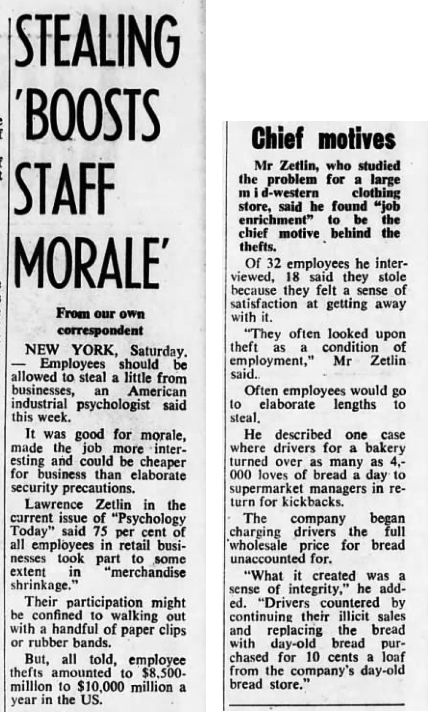
Sydney Morning Herald - May 30, 1971
Posted By: Alex - Wed May 25, 2016 -
Comments (6)
Category: Business, Crime, 1970s
Pre-Game Frog Head Biting
1977: Larry Canaday, football coach at Eau Gallie High School in Florida, would inspire his players to victory by biting the head off a live frog. No one at the school was particularly disturbed by this. Parents would even give him frogs before games to help fire up the kids. But when word of the unusual motivational technique began to attract national attention, school officials told Canaday that the "frog-biting must cease."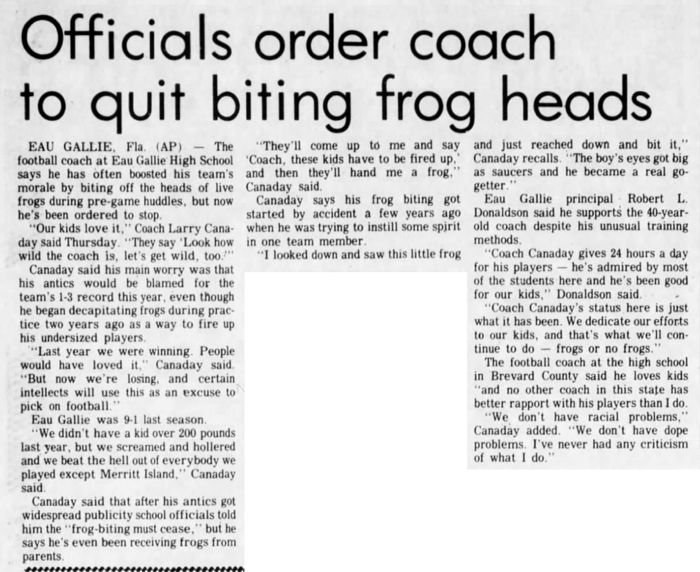
The Bloomington Pantagraph - Oct 14, 1977
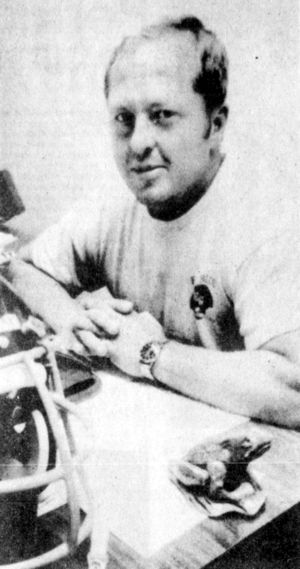
Coach Canaday, with frog statue
Posted By: Alex - Mon May 23, 2016 -
Comments (6)
Category: Rituals and Superstitions, Sports, 1970s
Suit Against Satan
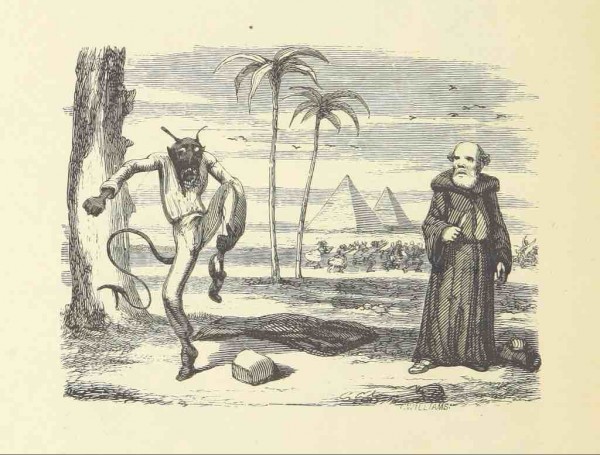
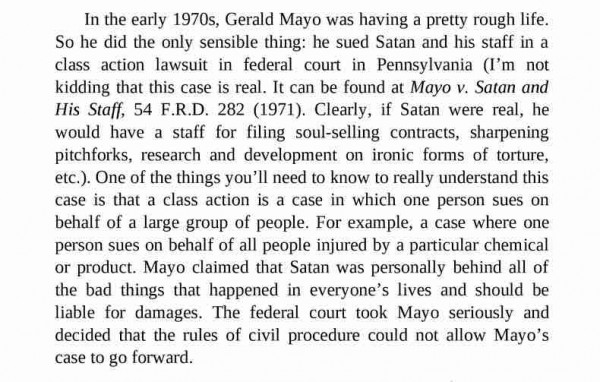
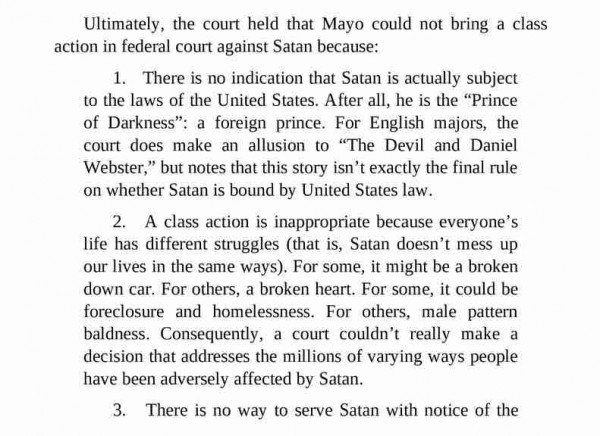

Original text here.
Wikipedia entry here.
Posted By: Paul - Thu May 19, 2016 -
Comments (7)
Category: Really Bad Ideas, Religion, Stupidity, Superstition, Lawsuits, 1970s, Fictional Monsters

| Who We Are |
|---|
| Alex Boese Alex is the creator and curator of the Museum of Hoaxes. He's also the author of various weird, non-fiction, science-themed books such as Elephants on Acid and Psychedelic Apes. Paul Di Filippo Paul has been paid to put weird ideas into fictional form for over thirty years, in his career as a noted science fiction writer. He has recently begun blogging on many curious topics with three fellow writers at The Inferior 4+1. Contact Us |




